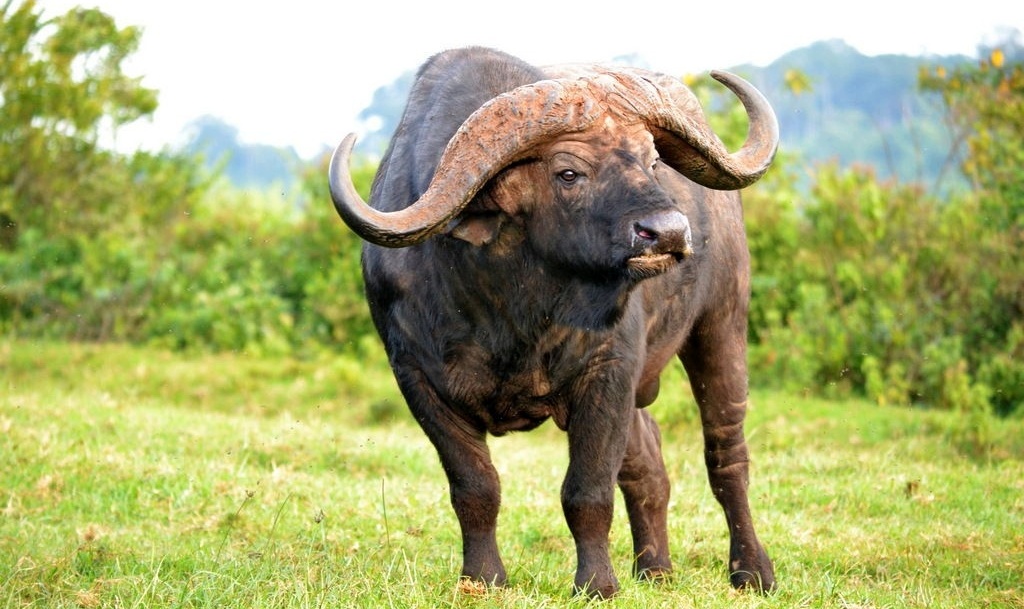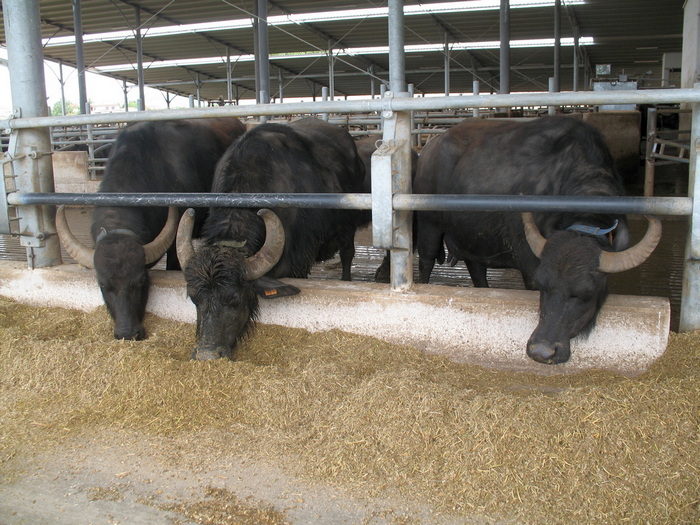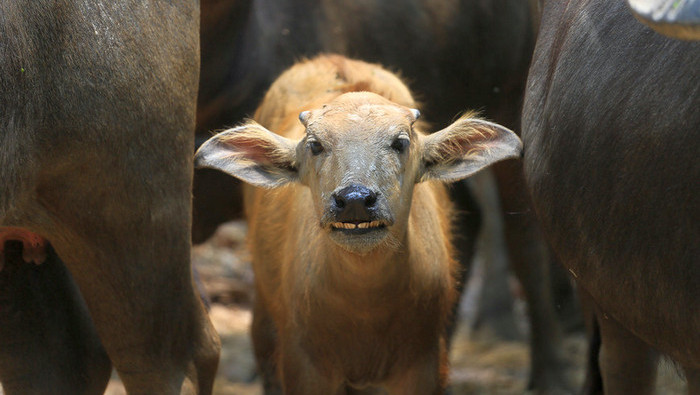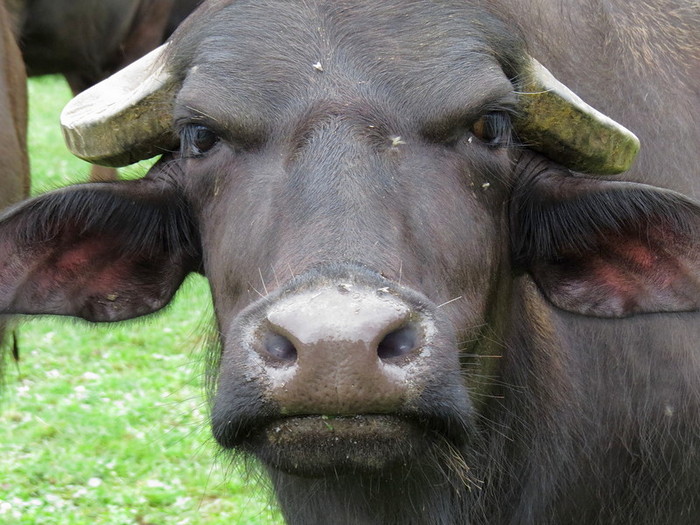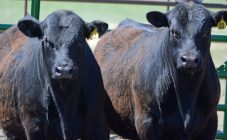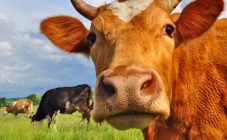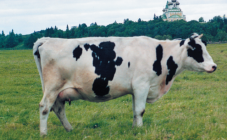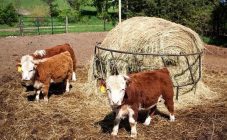Content:
The African buffalo is an animal belonging to the family of bulls, which is still not very popular in Russia, a representative of cattle. For most of the inhabitants of Russia, this animal is associated with anything but a farm. However, there are people who start to develop their livestock business using African buffaloes.
What does a buffalo look like
The black buffalo is a strong and powerful animal that lives in Africa. It differs from other representatives of its kind in particular aggressiveness.
What does an African bull look like? It is a large animal covered with coarse black hair. Has a dense build, the head is set low and is below the level of the withers. Horns are a distinctive feature of this species. Huge, curved, the distance between which can reach a meter. At the base, they grow together, forming a bony shield on the forehead.
Like many herd animals, African bulls have well developed sexual dimorphism - females differ significantly in appearance from males. Firstly, they are smaller and do not have such a powerful physique, and, secondly, their color often has a red tint.
How much does a buffalo weigh? The weight of a male adult black buffalo can range from 900-1000 kilograms. The height at the withers of a buffalo bull ranges from 1.5 to 1.6 meters, and the length of the body can reach 3.5 meters. Sometimes there are African bulls weighing 1200 kilograms.
Advantages and Disadvantages of the Kaffir Buffalo Compared to Others
Recently, bison, bison and water buffalo have become frequently used in the farming business. All these animals are included in the group of cattle, which means it makes sense to compare them with the main representatives of this group, which can most often be found on farms. For example, let's compare African bulls to cows.
Let's start with why buffaloes are of interest to livestock breeders and farmers. The undoubted advantages are:
- high fat content of milk... With proper care and good nutrition, the fat content of milk can reach 10%. For comparison, the fat content of cow's milk is usually no higher than 5%. And this makes buffalo milk an ideal raw material for the production of butter and cheese: in order to make a kilogram of butter, 30-35 liters of cow's milk will be needed, and if you replace it with buffalo, then 10-15 liters;
- low selectivity in terms of food... Buffaloes can eat almost any feed, even one that is not suitable for cows, which means that their maintenance is much cheaper, especially in winter;
- better health in comparison with other representatives of cattle. Buffaloes are less susceptible to various infectious diseases;
- they tolerate hot and humid climates very well, making them a more suitable type of cattle in the south of the country.
However, cows remain more popular. This is due to the following disadvantages of buffalo:
- a small amount of milk. With exactly the same content, buffaloes produce significantly less milk. Meat and dairy cows give 2-3 times more milk, and dairy cows 5-6 times more milk than buffalo;
- buffalo meat does not differ in special taste.Despite all the efforts of scientists and breeders, even the meat of special meat breeds is significantly inferior in taste to beef;
- character is another weakness of this cattle. First, buffaloes are more capricious and capricious than cows. And, secondly, African buffaloes, in comparison with Indian, Chinese and Tibetan bulls, are distinguished by increased aggressiveness.
Breeding and care
In the wild, the breeding season for buffaloes is March-May. At this time, ritual duels take place between the bulls in order to determine the strongest male in the herd. It happens like this - two African bulls stand opposite each other and gradually begin to approach each other, trying to intimidate the opponent. Usually the maneuver works and the loser hurries to leave the battlefield, but if both bulls do not want to admit that they are losers, then a battle takes place. The bulls run towards each other and collide with their heads, often the collision ends with one of the rivals breaking the horn.
The average duration of pregnancy is 10-11 months. At the time of calving, females usually move away from the herd and give birth to one calf weighing 40-50 kilograms. After 15 minutes, the calf is able to move independently, and the female and the calf return to the herd.
For about 6 months, the calf feeds on breast milk, although it begins to make attempts to feed on grass in the first month of life.
As for the breeding age, females can mate at three years old, but usually the first pregnancy occurs at the age of five. The goby is capable of breeding as early as one year old.
But this is in nature, but what about the economic cultivation? The main difference is that animals can mate all year round without regard to the natural framework of the mating season. The breeding process can be carried out in two ways - natural and artificial.
Among natural breeding methods, three types are popular:
- manual (mating under control);
- cooking method;
- free method.
But it is worth noting the fact that natural methods of reproduction are now practically not used anywhere. Because artificial insemination methods for cattle are much simpler, more efficient and more profitable.
A little about the content of African bulls. As it turned out, keeping them is even easier than keeping cows. Buffaloes need everything a normal cow does - good pasture and a regular barn. In addition, they are not so whimsical in their diet, and they can eat feed that is not suitable for cows. Corn stalks, straw of legumes and grasses can all be given to buffaloes without any fear. And in winter, they can even eat spruce branches. With regard to pastures, these animals also do not differ in whims, they can calmly graze where ordinary cows cannot. For example, in a swampy area or forest pasture. Fern, sedge and nettle - they eat these plants with great pleasure.
Despite the fact that the homeland of these animals is Africa, they perfectly tolerate both the hot climate and the cold Siberian winters. But at the same time, experienced livestock breeders insist that in winter, buffaloes need a warm capital barn.
Tips and tricks from livestock breeders
In general, given that the buffalo differs little from the cow in keeping, there are no special recommendations for caring for this animal. They are unpretentious neither in content nor in food. But, like other herbivores, African bulls have a great need for minerals and salt, for this, chalk and salt must always be in special feeders. And periodically it is recommended to add bone meal and charcoal to the diet.
Especially it is worth highlighting the opinion of different breeders to the nature of buffaloes. This is a real stumbling block. Some breeders believe that buffaloes have a very difficult character. Even though the females become attached to their master, in order to gain access to milk, it will be necessary to persuade the wayward animal. Others claim that there is no animal more affectionate and more loyal to the owner than the African buffalo, and that even cows are not as obedient as buffaloes.
So buffalo have many advantages, but there are also many arguments against their content. On the one hand, raising buffaloes in households is not difficult, but on the other hand, they have many weaknesses, and in some ways they lose to cows. But, nevertheless, they are becoming more and more popular in our country. At the moment, most of the livestock in Russia is bred in the territory of the Republic of Dagestan. However, gradually, especially proactive farmers from other regions of the country begin to breed this exotic animal.
